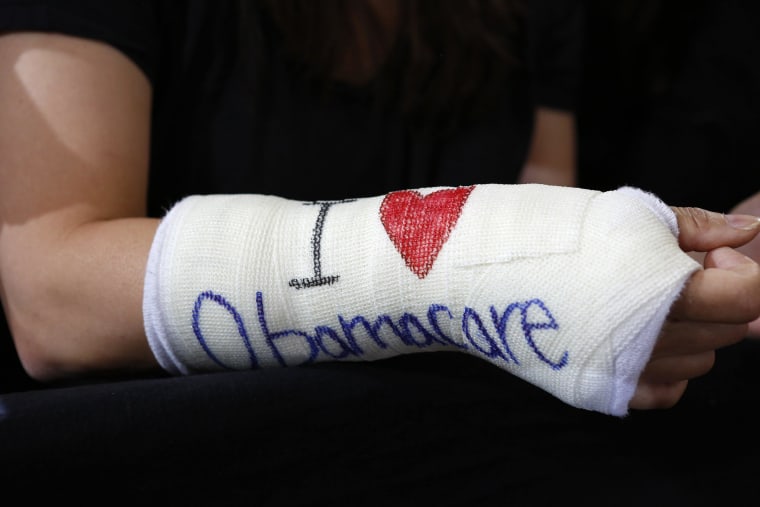Obamacare may have come under fire for rising health insurance premiums, but plans offered by employers, which cover far more people, are rising even faster, a new report shows.
On average, premiums for “benchmark” plans offered on the state and federal government health insurance marketplaces are 10 percent lower than for the average employer-sponsored plan, the team at the Urban Institute found.

And another study shows that premiums in general for employer-sponsored health care have been increasing since before Obamacare was even signed into effect in 2010.
Related: Obamacare Turns 6 and the White House Declares Victory
“We find that in most states and in most metropolitan areas, Marketplace premiums are lower than those for employer-sponsored plans,” Linda Blumberg, John Holahan, and Erik Wengle wrote in their report.
The left-leaning Urban Institute supports the 2010 Affordable Care Act, but their findings fit in with other research showing the same 10 percent figure.
Blumberg’s team set out to challenge a growing clamor of complaint about the premiums charged by insurance companies taking part in the Obamacare exchanges.
“We find that in most states and in most metropolitan areas, Marketplace premiums are lower than those for employer-sponsored plans."
“In recent months, several news accounts have pointed to large increases in Marketplace premiums throughout much of the United States. Many have taken these reports to question the viability of the Marketplaces and the Affordable Care Act in general,” they wrote.
It’s hard to make a head-to-head comparison. The exchanges were designed to help cover people who cannot get health insurance any other way by providing a controlled shortcut to buy private health insurance.
They offer various levels of insurance, from bare-bones “bronze” plans to the “silver” plans that can come with a federal subsidy, to the pricier “gold” and “platinum” plans. When people pay lower premiums, usually they must pay higher deductibles, co-pays and other out-of-pocket costs when they actually get medical care.
And the premiums vary widely from state to state and even county by county because of the way health insurance is regulated in the U.S.
But overall, the premiums are lower than those paid by workers for their company-sponsored health insurance, the team found.
“In 39 states including the District of Columbia, the average 2016 second-lowest-cost silver nongroup premium (the Marketplace ‘benchmark’ premium) was lower than the average employer-sponsored single premium when using the actuarial value, utilization, and age-distribution adjustments,” they wrote.
Several other reports also show that health insurance premiums are going up. Critics of Obamacare say the law itself is forcing this to happen.
Related: Obamacare Made Health Insurance Premiums Fall
The law has changed the way insurers offer coverage, forcing most of them to cover everyone who wants to buy health insurance and limiting the ability of companies to kick people off their rolls if they become too sick and too expensive to cover. The law also stops the once-common practice of disqualifying people for so called pre-existing conditions.
It also requires insurers to pay for much basic health care without requiring a co-pay — care such as vaccinations and cancer screenings. Companies say this has raised their costs and forced them to raise premiums.
Health and Human Services Secretary Sylvia Burwell says her department is aware of the complaints and working with insurers to find ways to help them maintain profits.
But a second report from the Kaiser Family Foundation shows that health insurance premiums were headed upwards even before the Affordable Care Act forced these changes.
And employees are paying a bigger share.
“Covered workers’ average dollar contribution to family coverage has increased 78 percent since 2006 and 28 percent since 2011,” the report reads. “Premiums for family coverage have increased 20 percent since 2011 and 58 percent since 2006.”
The report finds that the average family premium for employer-sponsored health insurance rose 3 percent between 2015 and 2016.
“In 2016, the average annual premiums for employer-sponsored health insurance are $6,435 for single coverage and $18,142 for family coverage,” it says.
“On average, covered workers contribute 18 percent of the premium for single coverage and 30 percent of the premium for family coverage, similar percentages to the recent past.” That works out to $1,129 for single coverage and $5,277 for family coverage.
HHS says the average Obamacare premium rose 9 percent this year over last year, to an average of $408 per month or $5,000 a year for 2016 plans.

